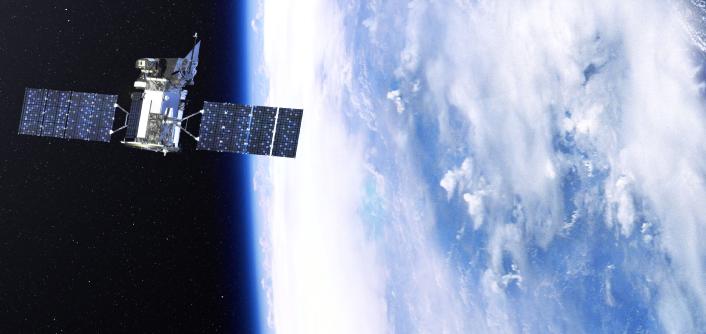NASA Primes New Satellite to Study Earth's Climate

NASA is preparing to launch its newest satellite that will monitor how the sun and tiny particles in Earth's atmosphere, called aerosols, affect the planet's climate.
Scientists hope the new Glory satellite, which launches this month, will address key uncertainties in climate research by enriching scientists' understanding of manmade and natural aerosol contributions to global climate change. The satellite's onboard instruments will also collect data to enhance scientific models, and could help paint a clearer picture of the causes and consequences of climate change.
"Glory is going to help scientists tackle one of the major uncertainties in climate change predictionsidentified by the United Nation's Intergovernmental Panel on Climate Change: the influence of aerosols on the energy balance of our planet," said Michael Freilich, director of the Earth Science Division in the Science Mission Directorate at NASA headquarters in Washington, D.C.
"This mission also marks the first satellite launch under President Obama's climate initiative that will advance the United States' contribution to cutting-edge and policy-relevant climate change science," Freilich said.
The spacecraft is scheduled to launch on Feb. 23 at 5:09 a.m. EST (1010 GMT) from Vandenberg Air Force Base in California. It will fly onboard Orbital Sciences Corporation's Taurus XL 3110 rocket. Once in orbit, Glory will slip into the tight formation of a fleet of Earth-observing satellites, called the Afternoon Constellation or "A-train."
"The Afternoon Constellation consists of multiple spacecraft flying in close proximity to create the first ever 'super observatory' that will give us near simultaneous observations of the Earth that include land, ocean and atmosphere," Joy Bretthauer, Glory program executive at NASA Headquarters, told reporters in a Jan. 20 news briefing.
The satellite will fly in a low-Earth orbit at an altitude of 438 miles (705 kilometers), which is roughly the distance from Boston to Washington, D.C. After launch, mission operators will conduct verification tests for 30 days and then begin to collect data for at least three years.
Breaking space news, the latest updates on rocket launches, skywatching events and more!
Glory will carry a suite of instruments designed to unravel some of the most complex elements of the Earth's biosphere and climate system. The satellite's two primary instruments include the Aerosol Polarimetry Sensor (APS) and the Total Irradiance Monitor (TIM).
The TIM instrument will maintain and improve upon a 32-year record of total solar irradiance, a value that fluctuates slightly as the sun cycles through periods of varying intensity approximately every 11 years. While scientists have concluded that solar variability is not the main cause of the warming observed on Earth in recent decades, the sun has historically caused long-term climate changes.
The APS will measure aerosols, which are airborne particles that can contribute to the warming and cooling of the planet by reflecting or absorbing solar radiation.
Aerosols can be natural – stemming from things like desert dust and volcanoes – or can have manmade origins, as is the case with air pollution. Scientists know these atmospheric particles, which also affect cloud formation and precipitation, influence climate on Earth, but they hope the Glory mission will contribute to a better understanding of how, and how much.
"The scientific knowledge on the Glory mission is crucial," Bretthauer said. "It will serve as resource for making scientifically-based economic, health and policy decisions related to environmental change."
You can follow SPACE.com Staff Writer Denise Chow on Twitter @denisechow.

Denise Chow is a former Space.com staff writer who then worked as assistant managing editor at Live Science before moving to NBC News as a science reporter, where she focuses on general science and climate change. She spent two years with Space.com, writing about rocket launches and covering NASA's final three space shuttle missions, before joining the Live Science team in 2013. A Canadian transplant, Denise has a bachelor's degree from the University of Toronto, and a master's degree in journalism from New York University. At NBC News, Denise covers general science and climate change.
